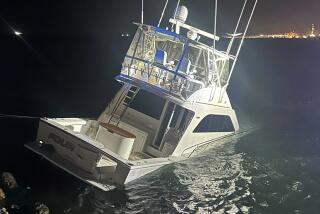Costa Concordia catastrophe: Why?
If the captain and crew of the cruise ship Costa Concordia messed up only half as badly as passengers and authorities say, they’d still be a disastrously inept and uncaring bunch. The captain of the Italian liner, reportedly trying to greet people on shore, veered onto rocks, and appears to have abandoned his ship: A transcript shows the Italian coast guard repeatedly and unsuccessfully ordering him to get back on board. Some crew members admirably took on the task of getting people safely off the ship, but others didn’t seem to know much more about evacuation procedures than the thousands of desperate passengers who fought against gravity to escape the listing craft. Some passengers say the requisite safety drill never took place. So far, at least 11 people have died and 20 or so more are missing.
As with the Costa Concordia, most maritime disasters aren’t the result of a single mistake or stroke of bad luck. It takes a pile of errors to add up to catastrophe. The Titanic didn’t just leave port with too few lifeboats. A ship nearby ignored its first signals for help. Rivets may have been faulty, a book claims. According to a British inquiry at the time, the ship was sailing too fast for iceberg-infested waters.
And most of these disasters have led to the adoption of new safety standards. The Titanic, 1912: Cruise ships must carry enough lifeboats for all passengers. The Morro Castle, 1934, on which 137 people perished after the crew ineptly handled a fire on board and subsequent evacuation: The creation of the U.S. Merchant Marine Academy, to train maritime officers. Still, regulation of cruise ships is uneven. The International Maritime Organization, a United Nations agency, adopts safety standards, but it’s up to treaty nations to sign on to those standards and, just as important, enforce them.
PHOTOS: Cruise liner runs aground
It’s too early to reach firm conclusions about what caused the most harrowing cruise accident in years, but so far the problem doesn’t seem to be a lack of regulations, just employees who appear not to have carried them out. The International Maritime Organization should lead the investigation to determine not only whether there were failures by Capt. Francesco Schettino and his crew, but whether the ship’s owner, the Italian subsidiary of Carnival Cruise Lines, took reasonable care in hiring and training, and whether Italy carried out its obligations to oversee the company. The cruise business, which has suffered a collective black eye as the world watches aghast, will almost certainly comb through industry standards and toughen them if necessary to prevent any future Costa Concordias.
More to Read
A cure for the common opinion
Get thought-provoking perspectives with our weekly newsletter.
You may occasionally receive promotional content from the Los Angeles Times.










